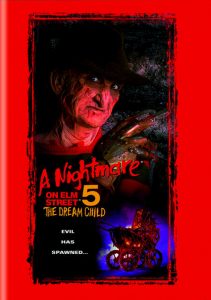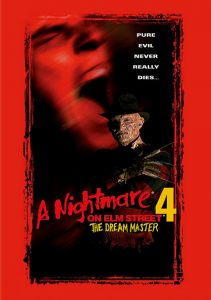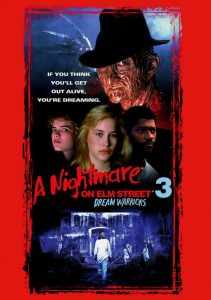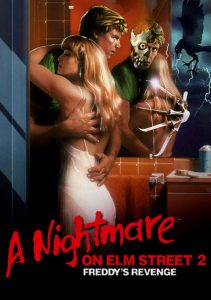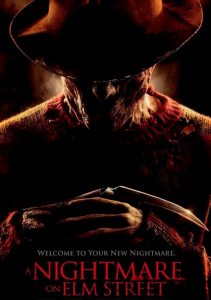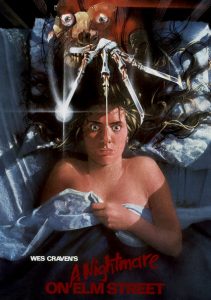A Nightmare on Elm Street 5: The Dream Child-1989
Director Stephen Hopkins
Starring Robert Englund, Lisa Wilcox
Scott’s Review #1,032
Reviewed June 12, 2020
Grade: C+
When one compares A Nightmare on Elm Street 5: The Dream Child (1989) to the first A Nightmare on Elm Street (1984), made merely five years prior, the latter is shockingly bad, but rated on its own merits it is okay with both creative and silly moments.
The franchise feels exhausted at this point, a long rest is recommended, as too many cheesy and doltish moments make this installment more of a comic failure with rarely any scary or sinister moments.
A watered-down and forgettable entry in a series once blooming with potential.
Sadly, it would only be two years before another Nightmare was released.
With a mother theme complete, nearly all the parents and children involved in Freddy Krueger’s original story-line dead and buried, a dream sequence double-shot contained within parts 3 and 4, the logical next idea is to utilize a child story.
This is not a bad idea given that Freddy was accused of child molestation, but the intention to produce a spawn of Freddy is less than marvelous. The Child’s Play franchise (1988-2019) took this cue with Seed of Chucky in 2004.
Once again, a year has passed since the events of the previous entry as Alice (Lisa Wilcox) and Dan (Danny Hassel) cheerily date and enjoy their lives together as they graduate from high school. They are accompanied by friends Greta, Yvonne, and Mark.
When Alice has a strange dream about a nun, a mental hospital, and an attack by patients, Dan stresses that she controls her dreams.
As the dreams persist she begins to have nightmares of Freddy and a strange baby. When Alice and Dan learn they are pregnant, things become violent when Dan and the others are systematically killed off in their dreams while Alice is deemed “crazy”.
A pleasantry to mention is that at least the film offers a slight measure of consistency and continuity as we are reintroduced to Alice and Dan, familiar characters from Part 4.
The film wisely keeps the same actors to avoid the jarring disruption that existed in Part 4 when a startling recast was made of its main character from Part 3. Johnson and Jordan are not the greatest actors nor are the supporting cast, but the great acting ability is a nicety not a necessity in slasher films.
The visuals are also entertaining, which has habitually been good throughout each of the chapters. Some animated sequences emerge, particularly within the dream sequences.
The kills and attacks are also well crafted as when a comic book artist is terrorized by Freddy and when one victim, Greta, eats herself alive. There is more humor to the kills than in other installments.
Greta’s death is almost revenge against her controlling mother, who is weight-conscious. When Greta chokes to death (in real life) she drops dead in front of her mother and their dinner guests.
The scene is macabre black humor.
Otherwise, the film is very familiar territory. The baby topic culminates in a wacky sequence that does not work well and is implausible even for a horror film.
In dreams, Freddy is feeding his victims to the baby (strangely, named Jacob- wouldn’t Freddy Jr. have been cleverer?) as nourishment to make him be like Freddy. In the real world, Dan’s (now dead) parents demand the baby from Alice when it is born.
This is a silly television afternoon special moment. The story concludes with Alice going to sleep to fight Freddy and save her son, which she naturally does.
At the risk of beating a dead horse, 1989 was a paltry year in cinema specifically in the slasher genre.
Quite successful during the late 1970s and the early 1980s, it became over-saturated and riddled with carbon copies. A Nightmare on Elm Street 5: The Dream Child (1989) is a forgettable film offering little to distinguish itself from other chapters. In its defense, how could it, be the fifth release in six years?
A feeble attempt by the studio to capitalize financially on a name brand that has run out of steam.
